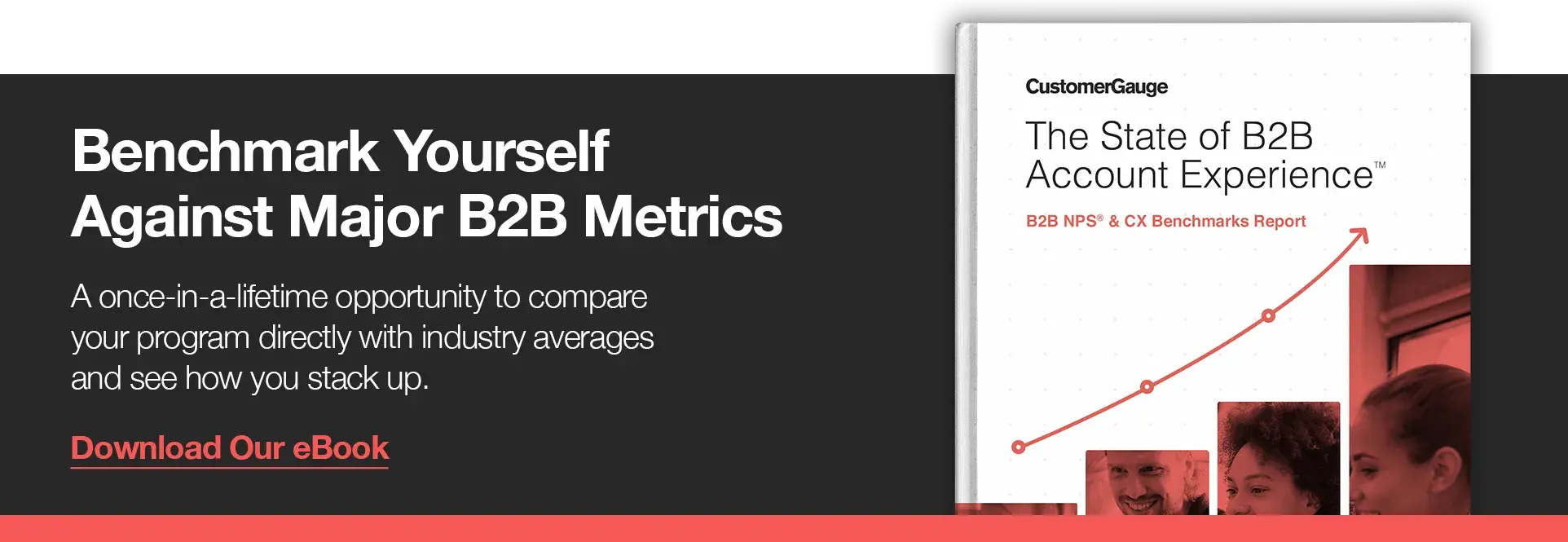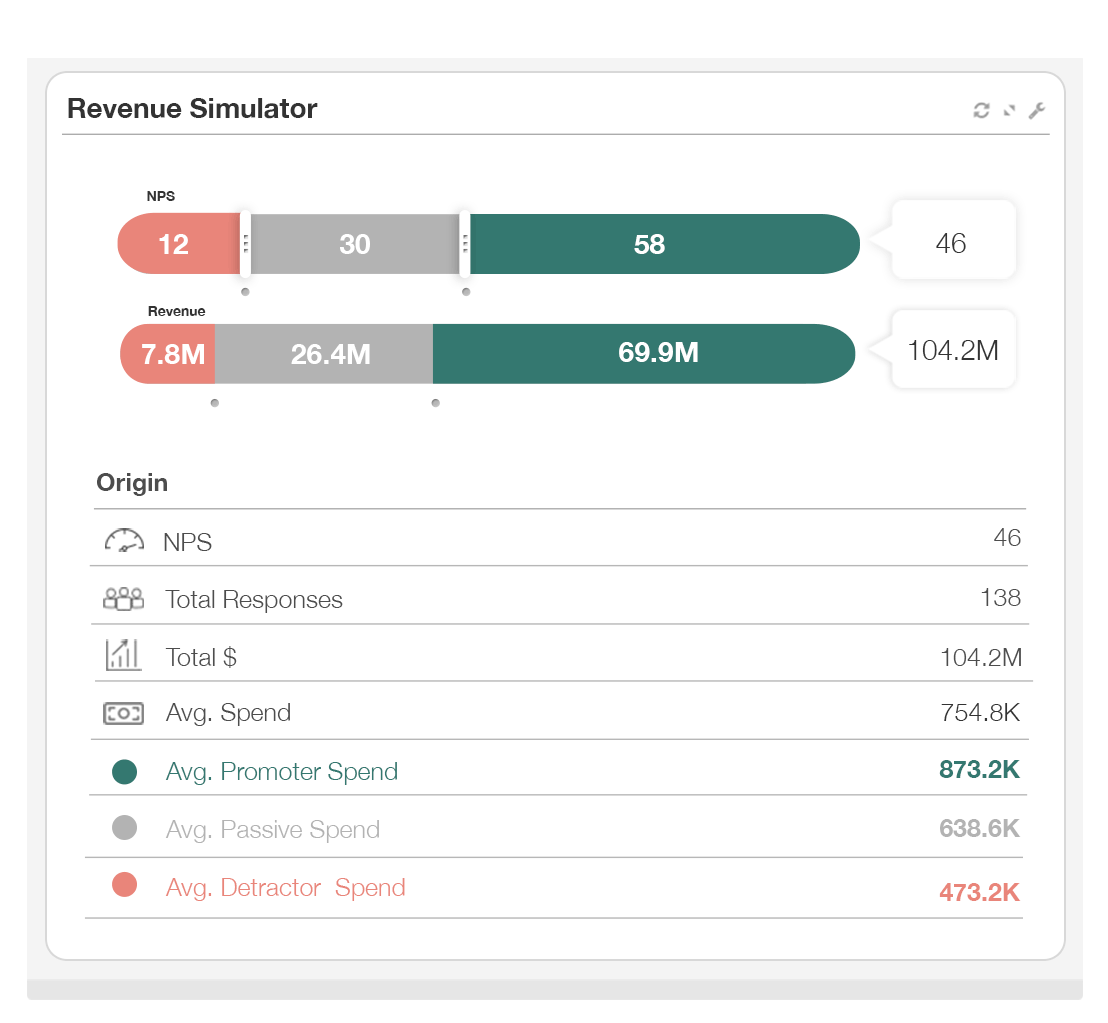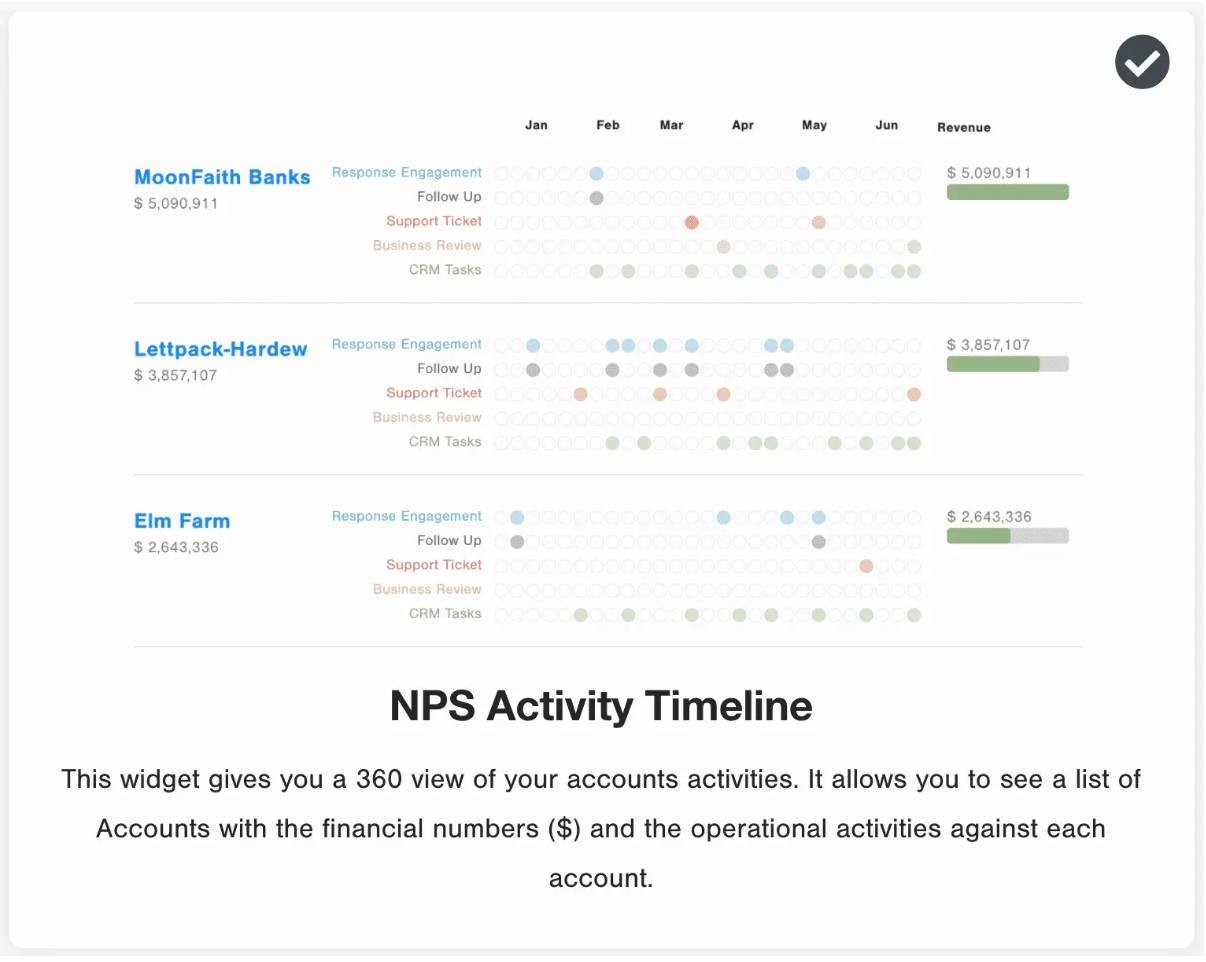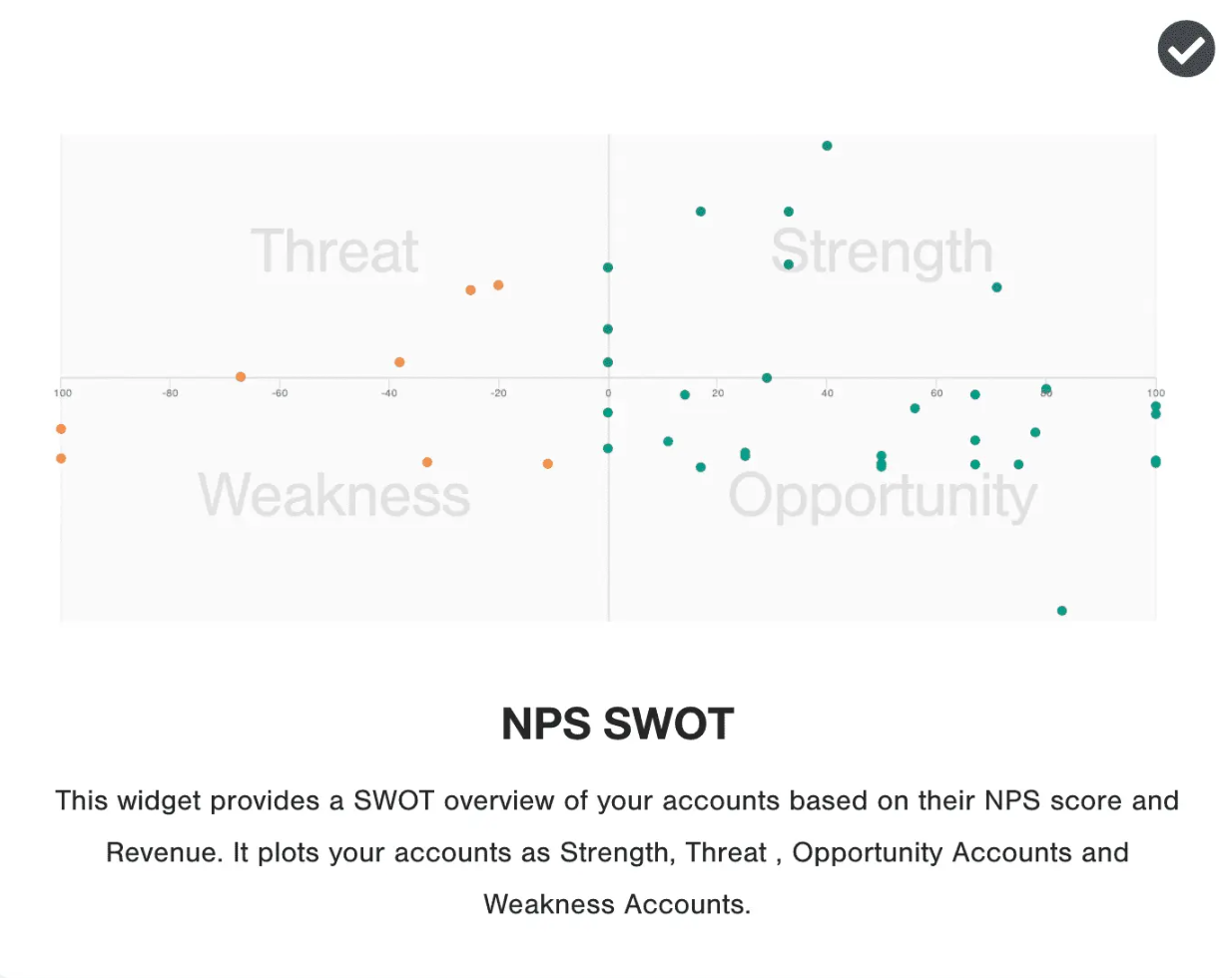More and more B2B companies are waking up to the fact that growth depends on more than just attracting new customers. Keeping your existing contacts onside is just as important as converting leads, if not more so.
That’s what Fred Reichheld, creator of the Net Promoter Score (NPS), and Maureen Burns have argued in their new book Winning on Purpose.
They make the case that Earned Growth, growth from retention, referrals, and upsells is a much more solid ground for sustainable revenue than Bought Growth, the revenue you bring in through marketing, discounts, and acquisition.
It’s a powerful point.
But the reality is that a staggering proportion of companies, approximately 44%, don’t know their retention rate. What’s more, according to our data, 63% don’t track referrals as a result of their CX program.
Yet, it’s customer churn that’s causing problems for most businesses.
Before you get into bringing revenue in through referrals, you must fill the hole in your leaking bucket of customers. And that happens with the Net Promoter Score system.
In this article, we take you through how to get on top of customer churn management with NPS.

Introducing Net Promoter Score for Customer Churn Management
NPS should be at the basis of your entire system for managing customer churn.
The most widely-used surveying technique to help you access insight into your customer experience (CX), NPS helps companies get to grips with exactly how their customers are feeling. That way, you see which customers are at risk of churn and which are good opportunities for referrals.
NPS gauges customer sentiment by asking customers the NPS question:
“On a scale from 0-10, how likely are you to recommend our product/brand/service to a friend or colleague?”
Depending on the results of your NPS survey, you can split customers into three groups:
Promoters, who scored you 9 or 10. These are your most enthusiastic customers.
Passives, who scored you 7 or 8. While they’re not your least happy customers, they are a churn risk if left unattended
Detractors, scoring you 0 to 6. These are your biggest churn risks, and your customer churn management should target them.

The actions you take to manage churn start from these three groups.
For example, reach out to detractors and try to mend your relationship by asking them what you could do to help them. It might also be a good idea to try to re-engage passive customers by closing the loop or sending them more regular content.
Here’s the biggest drawback: it can be incredibly time-consuming to try to send out all of these surveys, analyze responses, and draw up churn management strategies on the back of this.
NPS can be a big effort, but it’s worth it.
Here’s why:
How Can NPS Help You Manage Churn?
While known as a tool for assessing customer experience, NPS is more accurately a measure of customer loyalty. It’s a mechanism for understanding which customers are going to be retained, which are likely to churn, and how likely you are to build earned growth.
Here are some reasons why NPS is such a powerful tool for customer churn management.
It tells you exactly which customers are most likely to churn, based on their experience. What’s more, by surveying many individuals in each customer account, B2B brands can get a sense of different sentiments within each organization.
It tells you why customers might churn. Alongside the NPS question, ask customers for the drivers behind their sentiments. This can tell you why they are detractors and how you can improve their experience in the future.
It can easily be linked to revenue. While revenue is not considered in the original NPS system, it’s important that you reinforce your CX analysis with financial metrics. As Reichheld and Burns point out, that can help you clarify earned growth and the revenue that’s at risk of churn. (You can find out how much you’re at risk of losing with our ROI calculator.)
Simply running an NPS survey system reduces churn. Our data suggests that inaugurating an NPS system cuts churn by as much as 7%. That’s through improved trust and communicating to your customers that you care.
5 Steps to Effective Customer Churn Management With NPS
Now you’re familiar with NPS, let’s explore how you can use it to lower your customer churn rate.
The answer is with Account Experience, CustomerGauge’s unique methodology for improving customer experience and retention in B2B brands. It puts NPS at the heart of what you do, but reinforces the surveying system with wider metrics.
Here’s how to get started:
1. Target a High Response Rate in Your NPS Surveys
The first part of your NPS system is to send out your surveys.
However, to have a real impact on churn, this can’t happen at random. Instead, make yourself conscious of two key factors: your response rate and account coverage.
Optimize account coverage. For B2B brands, it’s not enough to survey just one individual in each account. Instead, identify several contacts per company, so you can get a sense of how different company members feel about your services. CustomerGauge’s Account Experience solution automatically recommends how many contacts you should connect with, depending on the size of the company.
Boost your response rate. The value of your surveys depends in part on the number of responses you receive. While the average NPS response rate is 12.4%, CustomerGauge helps you achieve a much better rate. For example, our client ICON Communications achieves a 100% response rate.

2. Tie NPS to Your Bottom Line
While NPS is powerful by itself, make sure you link it directly to your company’s revenue to get a full sense of the financial impact of your CX and Earned Growth.
With monetized NPS, part of CustomerGauge’s Account Experience methodology, you can begin to understand the cost of your CX, see how much revenue is at risk of churn, and assign financial values to different churn drivers.
For instance, you could find out that $500,000 of your revenue lost to churn was down to a lack of new features, whereas $230,000 can be attributed to poor customer support.

3. Close the Loop on NPS Surveys
It’s great to begin receiving NPS data, but your churn rate will only reduce when you do something with that data.
That’s what’s known as closing the loop.
Closing the loop involves acting on your customer feedback and telling them what you have done to improve their experience. This simple action can have a major impact. For example, our recent research found that businesses who closed the loop after NPS surveys had 3x more promoters in the next survey and nearly half as many detractors.

For example, we helped the software brand INAP reduce its churn by improving its closed-loop feedback processes.
Two years after signing up to Account Experience, INAP reported a 50% decrease in churn rate. TJ Waldorf explained that CustomerGauge’s tools helped the company to react intelligently to the NPS data.
“It’s one thing to just collect the data,” TJ said. “But, in my mind, the crux of the program is to actually do something with the data.”
4. Complement NPS With Engagement Metrics
In a context where a customer is about to churn, they might not be very likely to respond to your NPS survey. Instead, they may ignore your survey emails completely, go silent, and seem completely unengaged.
We call this absence of signal, and it’s a key indicator of churn.
However successful your customer churn management system might be with NPS, that system will be limited without taking engagement signals into account.
That’s why survey response rates matter so much. You can gauge churn risk simply by considering which contacts actually responded to your survey. Often, it’s easy to tell who’s engaged just by how often they respond to you and how quickly they respond after receiving a survey.

You can also apply this logic elsewhere.
Check how often key contacts have logged into your system or opened an email from you, for example. If contacts from a certain company are ‘ghosting’ your communication, it might be time to ramp up your engagement and offer them something different before they choose to leave.
5. Integrate Referral and Upsell Opportunities Into Your Churn Management System
Battling customer churn is not the endgame of your customer experience management.
Rather, using NPS data alongside revenue metrics to combat churn also helps you identify opportunities for what to do next.
Ultimately, you don’t want customers just to be retained. Rather, the goal of your NPS program should be revenue expansion.
That means building earned growth through upsells and referrals. Alongside showing you the customers at risk of churn, NPS gives you clarity on the strongest opportunities for growth i.e. those satisfied customers with low spend.
CustomerGauge’s NPS SWOT analysis, for example, helps you visualize the opportunities your customer base represents by identifying strengths, weaknesses, opportunities, and threats.
The SWOT uses both the NPS score and the annual revenue of each customer to determine their place. An opportunity, for example, is a customer with a high NPS score but low revenue (who may be receptive to upsells since they're so happy with your service).
On the other hand, a threat is a customer account with a low NPS score but high revenue.

After working with Account Experience for over a year, SmartBear capitalized on their referral program and brought in an additional $6 million in referral revenue.
At the same time, they also reduced churn by 47%.
Take a look at your NPS data and decide which action you should push your existing customers towards. This could be anything from an upsell to increase their engagement with your products or encouragement to create user-generated content in the form of forum posts.
Use CustomerGauge to Manage Your Customer Churn
CustomerGauge can help your B2B company improve your NPS survey response rate, close the loop, and identify opportunities for upsells and referrals.

